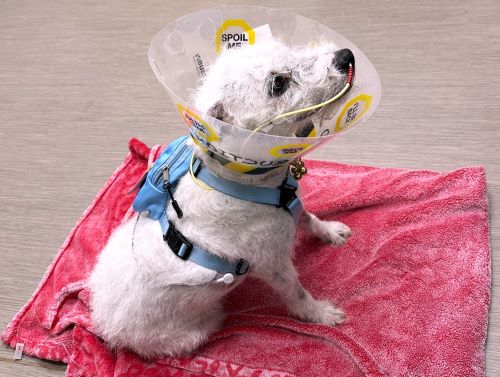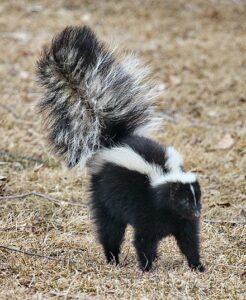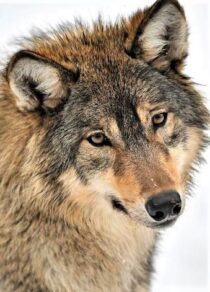SKIPPY’S STORY. Brave Terrier Nearly Died when Skunk Sprayed Dog.
Skippy’s story really is heartrending. Who knew that skunk spray could be so deadly? When that skunk sprayed the dog…

SKIPPY’S STORY: Toxic Skunk Spray Destroys Jack Russell Terrier’s Red Blood Cells
Over the years, our own dogs have had some scary encounters with wildlife.
Our first dog King, a husky, had a real hate for porcupines. King just couldn’t leave ’em alone. And since he was on a line, those prickly critters had to come out of the forest and go to him! Luckily we had a vet who was good at removing quills.
I was at work one day when a full-grown bear caught Mary Lee out by the barn. Brandy, our Black Lab, put herself between them and fiercely barked that bear back into the woods.
Our third dog Mocha, a big German Shepherd, regularly took it upon herself to chase away coyotes.
Our little Bella, the gentlest of Cocker Spaniels, is different. She used to try to befriend the wild rabbits who congregated on our front grass. It wasn’t until we recently retired to the City that she learned to bark at other dogs. And that was only after a couple sneaky dog attacks. (With sneaky owners.)
It happens, eh?
And now there’s this heartrending story of a Jack Russel by the name of Skippy from Alberta, Canada…
SKIPPY’S STORY: Brave Terrier Nearly Dies when Skunk Sprays Dog
“I don’t think an animal can go through much more and survive.”
Jack Russell Terriers love to hunt and dig. So it wasn’t that unusual when Skippy decided to chase a skunk into a large stack of hay bales. Instead of catching the skunk, however, the dog got trapped and was sprayed directly in the face. Resulting in a trip to the veterinary emergency room with life-threatening blood issues.
In honour of National Wildlife Day, the toxicology experts at Pet Poison Helpline would like pet lovers like us to know that being skunked can be more than just a stinky situation. It can be deadly to your furry family member.
“I have a farm, and I converted my old riding arena into a storage area for my hay,” explained Dr. Gigi Van Ostrand. Who happens to be a veterinarian.
“That day Skippy was running around chasing a skunk.”
“He’s been in many skunk encounters, so I wasn’t too worried about it. This time, he apparently chased the skunk deep into the stack of hay bales. And then he disappeared. We were busy with our horses, so we didn’t look for him for several hours.
“When we realized he had gotten trapped inside the hay, we had to use the tractor to carefully remove several of the bales. Which can weigh 1400lbs. I was very worried he could be crushed. And I think he passed out because I didn’t hear any noises coming from him.
“When we finally got him out, he was cold and purple.
“I’m a veterinarian. So I knew he needed more help than I could provide him. I rushed him to our local SAVE (Southern Alberta Veterinary Emergency) hospital. Once there, they had me call the toxicology experts at Pet Poison Helpline.”
 “Being sprayed by a skunk is a relatively common occurrence for pets. Especially those who live in a rural area,” explained Dr. Renee Schmid, a senior veterinary toxicologist. As well as director of Veterinary Medicine at Pet Poison Helpline.
“Being sprayed by a skunk is a relatively common occurrence for pets. Especially those who live in a rural area,” explained Dr. Renee Schmid, a senior veterinary toxicologist. As well as director of Veterinary Medicine at Pet Poison Helpline.
“Most exposures result in a pet that is covered in a strong smell, along with skin and eye irritation.
“In rare cases, however, the intense compounds in skunk spray can result in oxidative damage to red blood cells. And that can lead to changes in their ability to transport oxygen appropriately as well as death of the cell.
“This leads to anemia and a condition called methemoglobinemia. Which doesn’t allow oxygen to be delivered throughout the body as normal.
“In Skippy’s case, he had a very severe reaction that quickly became life-threatening.”
Once at Southern Alberta Veterinary Emergency (SAVE), the veterinary team worked directly with Pet Poison Helpline to analyze Skippy’s specific situation. And develop an aggressive treatment plan. The team was concerned that he would develop hemolysis. Hemolysis is the destruction of red blood cells that can lead to hemolytic anemia.
He was immediately placed on intravenous fluids, given medication for vomiting. Then was administered n-acetylcysteine (NAC). Which is a modified form of an amino acid that is useful in combating the blood cell damage being caused by the skunk spray.
After three days, Skippy’s condition hadn’t improved.
He was moved to the VCA Canada Calgary Animal Referral and Emergency (CARE) Centre. Since being sprayed, Skippy had become hyperthermic (overheating). Hypoglycemic (low blood glucose levels). Neutropenic (low white blood cell levels). And anemic (low red blood cell levels).
Skippy was placed on dextrose supplementation, continued on NAC, and received two blood transfusions and other supportive care. The trauma of being trapped under hay bales for several hours likely contributed to Skippy’s additional complications. This made his already difficult condition even more challenging.
After being released from the hospital, Skippy required continued treatment at home. Dr. Van Ostrand believes he was saved twice — once when he was pulled out of the hay. And again by the hospitals and Pet Poison Helpline.
“Skippy was all but dead,” concluded Dr. Van Ostrand, “but now he’s bouncing around like normal. I don’t think an animal can go through much more and survive. He’s an exquisite dog.”
Did you like this Canine Article?
Read this story of the Wolf who rescued a Husky!
 READ WOLFBLOOD — MY MOST POPULAR ANIMAL YARN: “I LOVE THE HAPPY ENDING!”
READ WOLFBLOOD — MY MOST POPULAR ANIMAL YARN: “I LOVE THE HAPPY ENDING!”
“I JUST READ WOLFBLOOD AGAIN FOR GOOD MEASURE. ONE FOR ANY WOLF LOVER. ENJOYED IT BUT WISH IT WAS A FULL LENGTH NOVEL.” – Gina Chronowicz @ginachron
“GREAT SHORT STORY! DOES REMIND ME OF CALL OF THE WILD, WHITE FANG…” – Evelyn @evelyn_m_k
An “entertaining and affectionate” narrative in the Jack London Tradition. Story of a lone Gray Wolf and his quest for a place in the far-flung forests of the feral North. WOLFBLOOD: A Wild Wolf, A Half-Wild Husky & A Wily Old Trapper
About Pet Poison Helpline – Including Skunk Spray
“Pet Poison Helpline is your trusted source for toxicology and pet health advice in times of potential emergency (including skunk spray). It’s available 24 hours, seven days a week for pet owners and veterinary professionals. Anyone who requires assistance treating a potentially poisoned pet. Per incident and subscription service options are available.
“We are an independent, nationally recognized animal poison control center. Triple-licensed by the Boards of Veterinary Medicine, Medicine and Pharmacy. Providing unmatched professional leadership and expertise. Our veterinarians and board-certified toxicologists provide treatment advice for all species. These include dogs, cats, birds, small mammals, large animals and exotic species.”
As the most cost-effective option for animal poison control care, Pet Poison Helpline’s fee of $85 per incident. And includes follow-up consultations for the duration of the case. The company also offers pethelpline(SM) and pethelplinePRO(SM) subscription services directly to pet lovers. Based in Minneapolis, Pet Poison Helpline is available in the U.S. and Canada by calling 800-213-6680. Additional information can be found online at www.petpoisonhelpline.com.
SOURCE: Pet Poison Helpline, PRNewswire & CivilizedBears.

TAGS: Dog gets skunked, dog got sprayed by skunk, dog story, encounters with wildlife. National Wildlife Day, skunk remedy for dogs, skunk smell, skunk sprayed dog.












